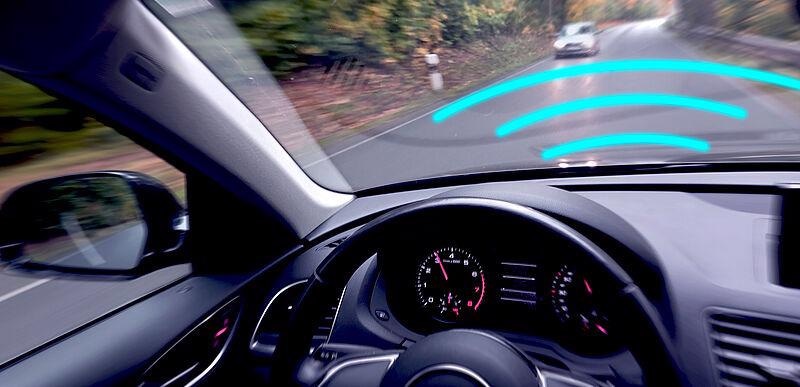As an interesting fact, modern cars contain an increasing number of sensors. They help with parking, tracking blind spots and helping people keep their distance from the car in front.
 Paderborn scientists and industry partners are researching robust environmental sensors for fully autonomous vehicles to enable automated driving functions to be used safely even under adverse environmental influences. Image Credit: Paderborn University, Jennifer Strube.
Paderborn scientists and industry partners are researching robust environmental sensors for fully autonomous vehicles to enable automated driving functions to be used safely even under adverse environmental influences. Image Credit: Paderborn University, Jennifer Strube.
As far as autonomous vehicles are concerned, such sensors must go beyond just offering comfortable assistance. They must also reliably capture the complete surroundings.
But variation in weather conditions poses a huge difficulty for the technology. For instance, powerful background light, dense fog or snowfall can imply that the system does not have the ability to detect obstacles, other vehicles or people until too late or fails to do so at all.
For automated driving functions to be utilized safely even under detrimental environmental influences, scientists at the Heinz Nixdorf Institute at Paderborn University and the Fraunhofer Institute for Mechatronic Systems Design IEM are working with industry collaborators to enhance the potential of sensors and sensor systems to resist environmental conditions like bad weather or pollution.
For this to be done, the researchers have come up with virtual environments where they could test trustworthy environmental sensors for highly and completely autonomous vehicles so that they can then be enhanced based on the outcomes.
Also, the scientists at Paderborn, the companies HELLA GmbH & Co. KGaA (network coordinator), dSPACE GmbH, RTB GmbH & Co. KG, and Smart Mechatronics GmbH are involved in the project (rosshaf), titled “robustness to environmental conditions of sensors and sensor systems for highly automated driving.”
It was started in April and has received 2.81 million euros of financial support from the German Federal Ministry of Economic Affairs and Energy (BMWi).
Only Safe in Good Weather?
From driving assistants to self-driving cars, vehicles are now able to perceive their environment to a varying extent using numerous sensors. The higher the vehicle’s level of automation, defined by the SAE level set by the Society of Automotive Engineers, the higher the requirements placed on the car. As well as complex technical equipment, the systems in question must also be very robust. Environmental sensors in particular are a critical factor.
Environmental sensors are pivotal for identifying objects in the area surrounding the vehicle. With the rising level of automation, vehicles are becoming increasingly dependent on continuously functioning sensors.
Nico Rüddenklau, Research Associate in the “Control Engineering and Mechatronics” Research Group, Paderborn University
This research group was headed by Professor Dr. Ansgar Trächtler at the Heinz Nixdorf Institute.
For instance, vehicles with an SAE level of 3, that is, vehicles with conditional automation, have currently turned out to be increasingly common on public roads. However, their use needs the driver to always be set for action and also able to take over control.
This is required if certain vehicle sensors are defective or impaired. As rain, snow and fog can cause malfunctions such as these, they are not a rare occurrence, particularly given the weather conditions in Germany. On the other hand, SAE level 5 (i.e. fully automated) vehicles must be able to function at any time and anywhere in the world, without requiring any intervention from the occupant.
Nico Rüddenklau, Research Associate in the “Control Engineering and Mechatronics” Research Group, Paderborn University
Simulation in Bad Weather Conditions
This is the place where the project comes into play.
We are working to make autonomous vehicle sensors robust enough that they can be used at SAE levels 4 and 5, i.e. for highly and fully automated vehicles. With our project, we are seeking to help develop such vehicles and bring them to streets in the future.
Nico Rüddenklau, Research Associate in the “Control Engineering and Mechatronics” Research Group, Paderborn University
Designing automated driving functions to fulfill the needs of SAE levels 4 and 5 still needs additional study. To be able to thoroughly test and improve environmental sensors, the project collaborators are virtually outlining the separate sensors and simulating how they tend to behave in bad weather conditions.
To achieve this, they started by developing a simulation environment. This allows particular driving situations and accident scenarios that cannot be tested in real life for safety reasons to be integrated into the investigation. Rüddenklau also stresses that the simulations imply that the tests are quick to implement, affordable and reproducible.